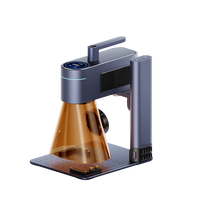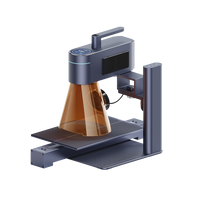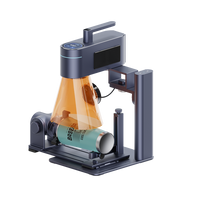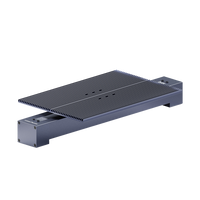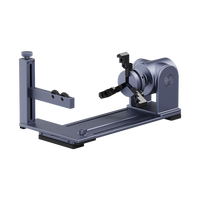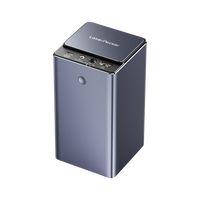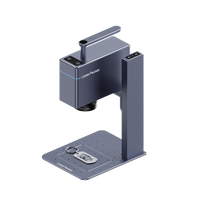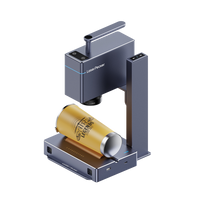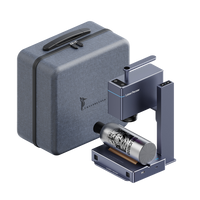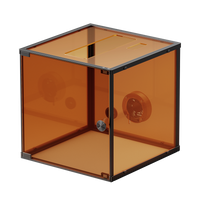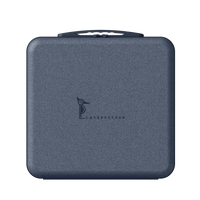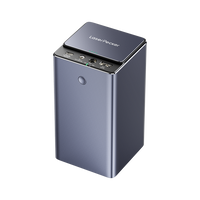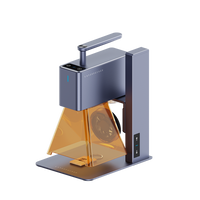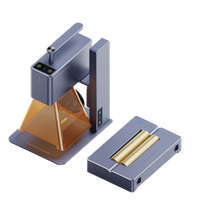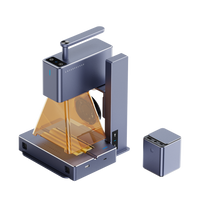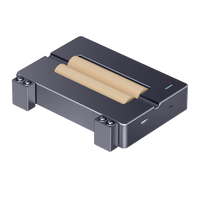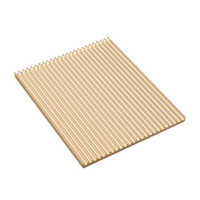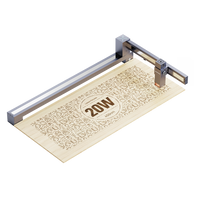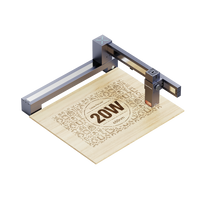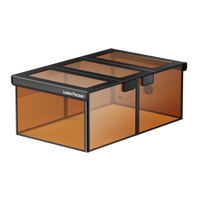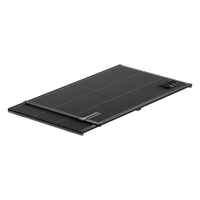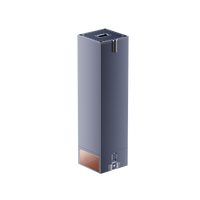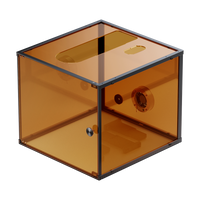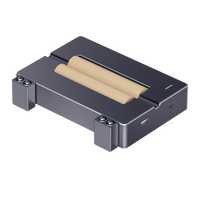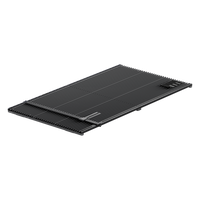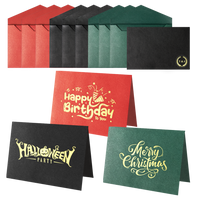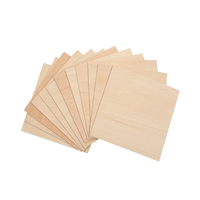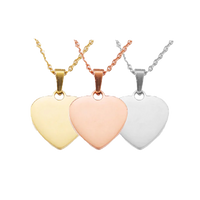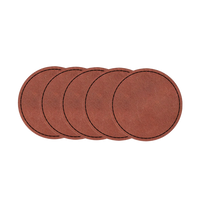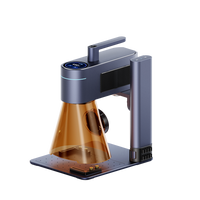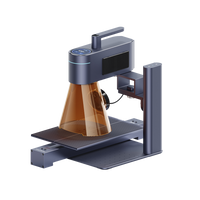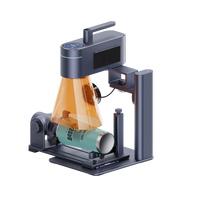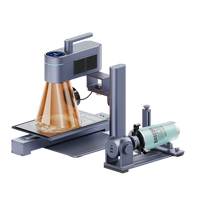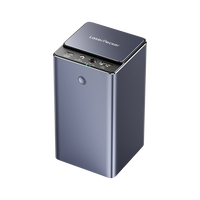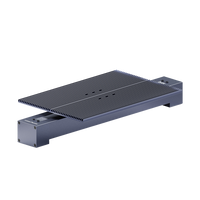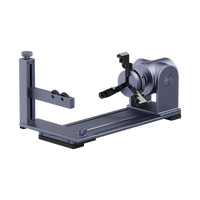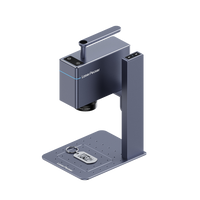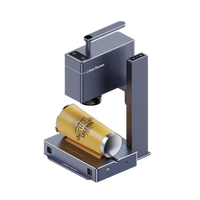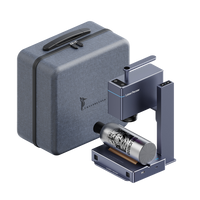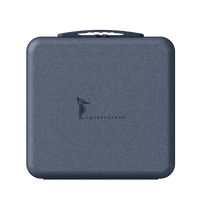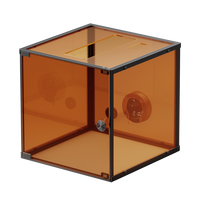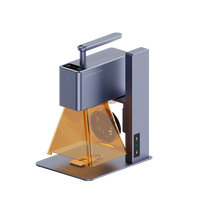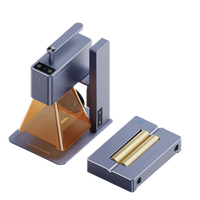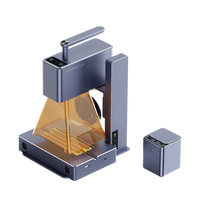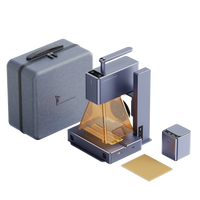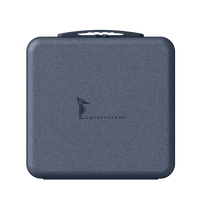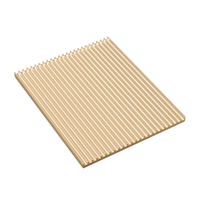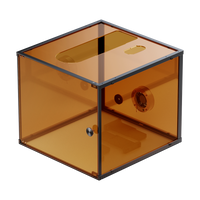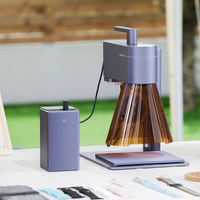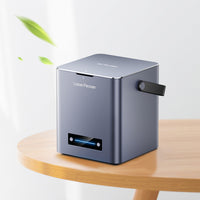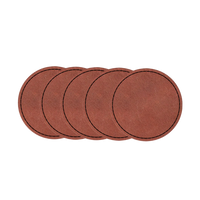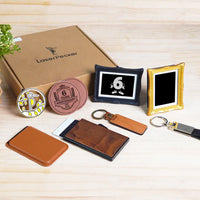In this article:
- Part 1. Understanding the LaserPecker Brand
- Part 2. Understanding the LaserPecker LP4 Product
- Part 3. LaserPecker LP4 Product Innovation - Red-Blue Dual-Laser System
- Part 4: Challenges Faced and Solutions during LaserPecker LP4 Product Development
- Part 5. Expanding Knowledge: Types of Laser Light Sources
- # Comparison Table for Blue, Infrared, and Violet Laser Light Sources
- Part 6. Conclusion
Part 1. Understanding the LaserPecker Brand
LaserPecker is a company specializing in laser engraving and cutting devices. We provide portable laser engraving machines suitable for personal and small studio use, offering capabilities for engraving text, patterns, and more.
Release Timeline for Laser Engraving Machine Series:
- LaserPecker LP1/1 Pro: September 2019
- LaserPecker LP2: December 2021
- LaserPecker LP3: June 2022
- LaserPecker LP4: December 2022
Release Timeline for Laser Cutting Machine Series:
- LaserPecker LX1/1 Max: March 2023
Part 2. Understanding the LaserPecker LP4 Product
The LaserPecker LP4, launched through crowdfunding in December 2022 and officially released in July 2023, is a portable laser engraving machine. Here are some features and specifications of the LP4:
- Portability: Designed to be lightweight and compact, the LaserPecker LP4 is convenient for users to carry and use.
- Material Compatibility: Supports laser engraving on over 300 materials, including wood, leather, paper, fabric, and plastic.
- Laser Engraving Functionality:Primarily used for laser engraving, allowing for engraving, drawing, and lettering on various materials.
- Connectivity: Connects to mobile devices or computers via Bluetooth for convenient control during the engraving process.
- Software Support: Equipped with dedicated mobile and desktop applications for designing, editing, and controlling laser engraving tasks.
- Safety: Incorporates safety measures, such as automatic shutdown during laser engraving, ensuring user safety.
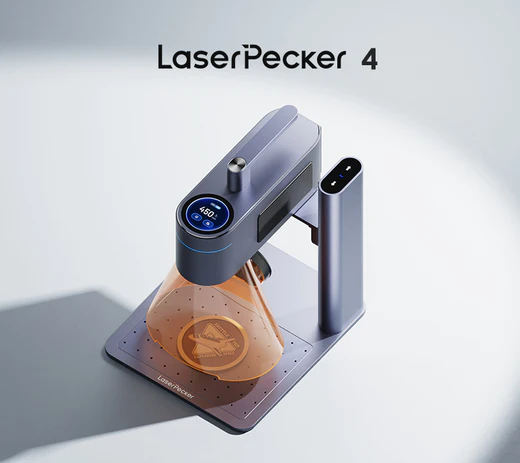
Part 3. LaserPecker LP4 Product Innovation - Red-Blue Dual-Laser System
Responding to user feedback and aiming to meet diverse engraving/cutting needs, the LP4 underwent a new round of product innovation. Through independent research and development and the integration of two types of lasers based on LP2 and LP3, the LaserPecker LP4 successfully implemented the Red-Blue Dual-Laser System. By simply switching between light sources, the LP4 achieves optimal engraving/cutting results, ensuring consistent quality across different materials, making it economically efficient and practical.
Laser Specifications for LP2:
- Laser Type: 5W 450nm Blue Diode Laser
- Applicable Materials: Lacquered metal, Anodized aluminum, 304 stainless steel, Bamboo, Wood, Leather, Food, Paper, Fabric, Photosensitive printing, Plastic, Acrylic, Tinted glass, Color glaze ceramics, etc.
Laser Specifications for LP3:
- Laser Type: 1W 1064nm Infrared Laser
- Applicable Materials: Most Metals, Plastics, Leather, and any material with paint coating
Laser Specifications for LP4:
- Laser Type: 10W 450nm Blue Diode Laser + 2W 1064nm Infrared Laser
- Applicable Materials: Almost All Materials (300+)

Part 4: Challenges Faced and Solutions during LaserPecker LP4 Product Development
Due to the different wavelengths of blue and infrared lasers, their refractive characteristics in the optical system vary. To ensure consistent focus in the laser engraving machine, optical system optimization was necessary. Overcoming this challenge involved adjusting optical components, particularly the lens system.
How did LaserPecker LP4 overcome these challenges? Here are some methods employed:
- Lens Selection: Choosing lenses suitable for both wavelengths. Different wavelengths interact differently with lenses, so selecting appropriately designed lenses ensures similar focusing characteristics at the focal point.
- Dual-Wavelength Lens: Using lenses specifically designed for multiple wavelengths to adjust the focal length to some extent, ensuring similar characteristics at the focal point.
- Adjusting Lens Positions: Fine-tuning and calibrating the optical system by adjusting the position of lenses or other optical elements.
- Use of Adjustable Focus Lens System: Equipping the laser engraving machine with an adjustable focus lens system that can manually or automatically adjust the focal length for different wavelengths.
Part 5. Expanding Knowledge: Types of Laser Light Sources
What are the types of laser light sources for diode laser engraving machines?
Diode laser engraving machines typically use semiconductor diode lasers as the laser light source. The types of these lasers are primarily categorized based on their working wavelengths. Here are some common types of laser light sources for diode laser engraving machines:
Infrared Laser Light Source: Some diode laser engraving machines utilize infrared lasers with wavelengths usually ranging from 700nanometers to 1100nanometers. Infrared lasers have advantages in specific engraving applications, such as engraving on transparent materials.

Blue Laser Light Source: Employing semiconductor lasers with wavelengths in the blue light spectrum, typically ranging from 450nanometers to 490nanometers. Blue lasers offer high resolution and precision in engraving, commonly used for materials like wood, leather, and paper.
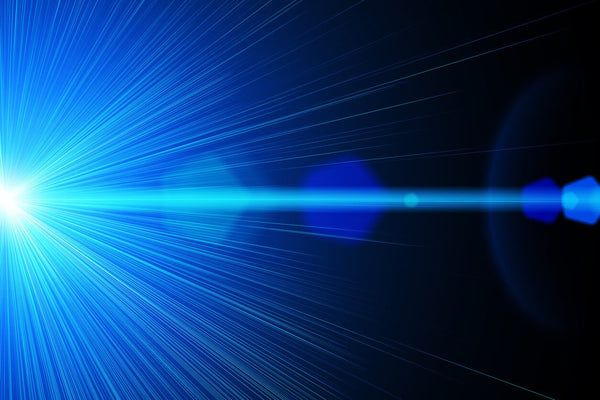
Violet Laser Light Source: Using semiconductor lasers with wavelengths in the Violet light spectrum, typically ranging from 380nanometers to 450nanometers. Violet lasers create unique effects in certain applications, commonly used in making signs on transparent materials and biomedical applications.

# Comparison Table for Blue, Infrared, and Violet Laser Light Sources:
|
Features |
Infrared Laser |
Blue Laser |
Violet Laser |
|
Wavelength Range |
Approximately 700nm - 1100nm |
Approximately 450nm - 490nm |
Approximately 380nm - 450nm |
|
Visible Light |
No |
Yes |
Yes |
|
Common Applications |
- Communication - Laser Radar - Medical Imaging |
- Laser Display - Laser Printing - Optical Storage |
- Laser Display - Biomedical Applications |
|
Advantages |
- Long-distance transmission - Good penetration in medical imaging |
- High resolution - Used in high-density optical storage - Blue light used in some display technologies |
- Excites fluorescent markers, commonly used in biomedical research - Violet light used in some display technologies |
|
Disadvantages |
- Not visible to the naked eye - Atmospheric absorption during communication may affect transmission distance - Infrared lasers may produce more heat |
- Greater beam scattering - High sensitivity of the eyes, requires high safety standards - Higher manufacturing costs for blue lasers |
- Some wavelengths are sensitive to the eyes, requiring attention to safety - High manufacturing costs for Violet lasers |
|
Range of Engravable Materials |
- Metals - Plastics - Ceramics - Glass |
- Wood - Leather - Paper - Plastics - Some metals (depending on power and material type) |
- Plastics - Transparent materials - Metals (certain wavelengths) - Biological tissues (fluorescence excitation) |
|
Engraving Applications |
- Metal engraving - Ceramic lettering - Glass engraving |
- Crafting wooden artifacts - Lettering - Artistic laser engraving |
- Creating transparent plastic signs - Biomedical fluorescence imaging - Color laser engraving |
|
Whether LaserPecker adopts |
√ |
√ |
× (due to high manufacturing costs, short lifespan, poor cutting ability, and sensitivity to the eyes) |
Expanding: What is the visible wavelength range for the human eye?
The visible wavelength range for the human eye is typically between approximately 380nm (Violet) and 750nm (red). This range is known as the visible spectrum, encompassing Violet, blue, green, yellow, orange, and red colors.
The corresponding wavelengths for these colors, from short to long, are Violet (380nm - 450nm), blue (450nm - 495nm), green (495nm - 570nm), yellow (570nm - 590nm), orange (590nm - 620nm), and red (620nm - 750nm).

Part 6. Conclusion
At LaserPecker, we take pride in continuously pushing the boundaries of laser engraving innovation. Our developed product, LaserPecker LP4, boasts extensive functionalities unmatched by similar laser engraving machines. We are delighted to see the pioneering Red-Blue Dual-Laser System, first researched by LaserPecker, being adopted in an increasing number of brand products. LaserPecker remains committed to ongoing product innovation, steadfastly delivering superior laser engraving product experiences to users. If you seek to unleash your creativity and turn your ideas into reality, LaserPecker LP4 is your optimal choice. For more product information, please visit the LaserPecker LP4 product page!




















